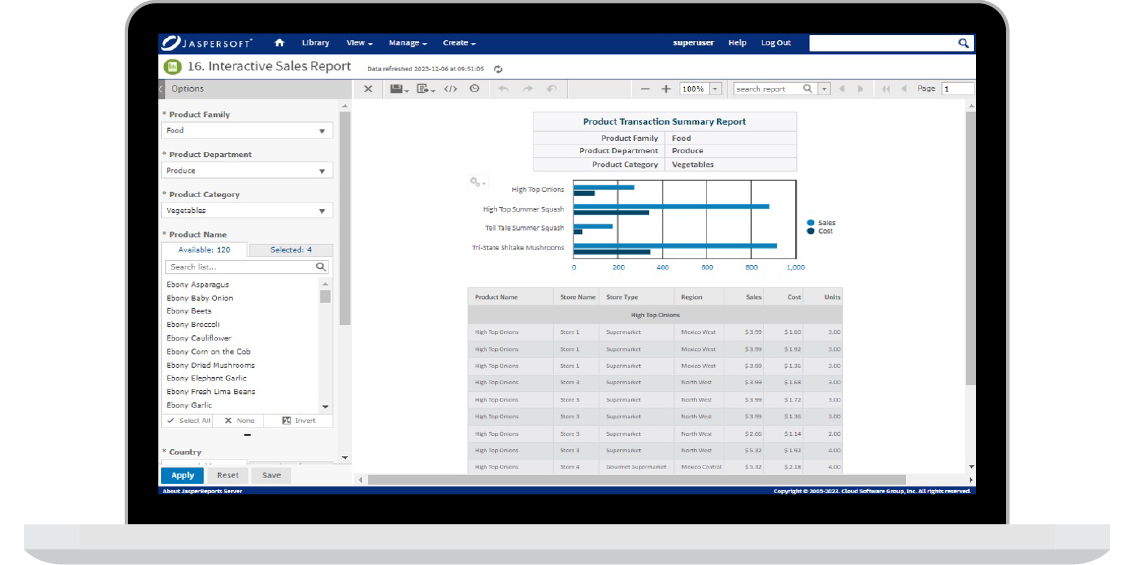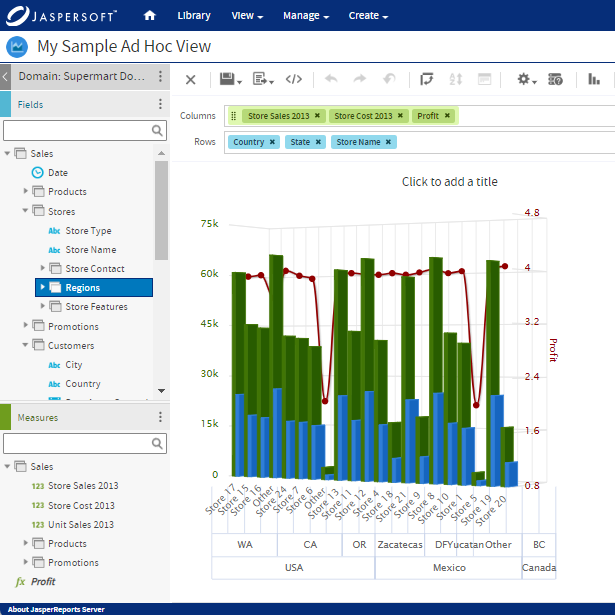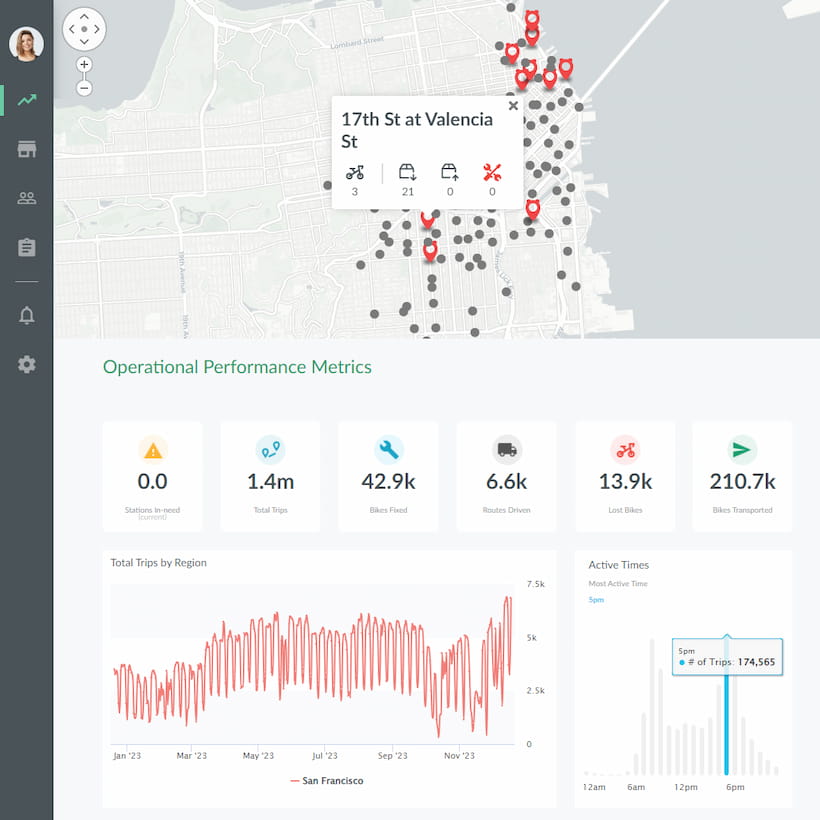What is Formatted Reporting?
Formatted reporting is a way of presenting and organizing information in a clear and concise manner, following a specific format and structure. It is commonly used in academic, business, and scientific contexts, to communicate facts, data, and analysis about a particular topic, issue, or event.
A formatted report is different from an essay, blog post, or journalistic article, as it focuses only on the facts and does not include the personal opinions or arguments of the author. The report also has a clear structure, with headings, subheadings, and sections, to make it easy for the reader to find the information they need.

Understanding the Landscape: Exploring Various Types of Formatted Reports
Formatted reports are tailored to meet specific business needs. Let’s find out about the different types of formatted reports, understanding their unique characteristics and the insights they offer.
1. Financial Reports: The Pulse of Monetary Health
Financial reports encapsulate the heartbeat of an organization's monetary health. These reports demand meticulous formatting to ensure that every dollar and cent is accounted for accurately. Headers delineate revenue streams, subtotals provide clarity, and footers summarize the financial narrative.
When crafting financial reports, precision is non-negotiable. Decimal points must align, and totals must reconcile. Utilizing consistent fonts and colors not only adds a professional touch but aids readability. For stakeholders navigating the complex landscape of financial data, a well-formatted report is akin to a financial roadmap, guiding them through the fiscal journey with confidence.
2. Sales Reports: Navigating Market Tides
In the dynamic world of sales, formatted reports are the compass guiding businesses through market fluctuations. Sales reports may include metrics such as revenue, units sold, and customer acquisition costs. Effective formatting ensures that trends are apparent at a glance – a surge in sales during a particular quarter or a dip in a specific product's performance. Subheadings within the report may break down data by region, product category, or sales channel.
To enhance the impact of sales reports, visualization tools like charts and graphs become allies. Bar graphs illustrate sales performance over time, while pie charts offer a snapshot of market share. The narrative unfolds through well-organized sections, highlighting key insights and paving the way for strategic decisions. In the realm of sales, a meticulously formatted report is not just a document; it’s a strategic asset.
3. Project Status Reports: Navigating the Path to Completion
Project status reports offer a comprehensive view of project progress, highlighting milestones achieved and potential roadblocks. The formatting of project status reports often includes a Gantt chart, providing a visual timeline of tasks and deadlines. Subheadings may categorize updates by project phase or team.
The language in project status reports is as critical as the formatting. Clear, concise updates using bullet points or numbered lists ensure that stakeholders absorb information efficiently. Accompanying visuals like progress bars or color-coded indicators enhance the report's impact. In the realm of project management, a well-structured status report is the key to keeping all hands-on deck and moving in unison towards successful project completion.
4. Marketing Reports: Unveiling Campaign Success
In the ever-evolving landscape of marketing, reports are the storytellers narrating the tale of campaign successes and areas for improvement. Marketing reports may encompass data on website traffic, conversion rates, and the effectiveness of various marketing channels. Subheadings could categorize data by campaign type, target audience, or geographic region.
Visual elements in marketing reports are not just aesthetic additions; they are integral to conveying the narrative. Heat maps may highlight areas of high user engagement on a website, and line graphs may depict the rise and fall of campaign performance. In this arena, where creativity meets data, a well-formatted report serves as the canvas upon which the success story of marketing endeavors unfolds.
5. HR Reports: Nurturing the Human Capital
Formatted reports play a pivotal role in human resource management. The reports contain employee performance metrics, training completion rates, or turnover statistics. Formatted with clarity, these reports may include subheadings that categorize information by department, role, or performance level.
In HR reports, the human touch extends beyond the content to the formatting itself. A well-structured report not only communicates data but also reflects the organization's commitment to its employees. Visual elements may include organizational charts depicting reporting structures or graphs illustrating diversity and inclusion metrics. In the realm of human resources, a formatted report is a testament to an organization's dedication to fostering a thriving workplace.

Importance of Formatted Reporting: Beyond Aesthetic Appeal
One of the key virtues of formatted reporting lies in its ability to enhance readability. Imagine deciphering a report with haphazardly presented data – a maze of numbers and graphs that leave you more perplexed than informed. Formatted reporting flips the script, offering a structured presentation that facilitates seamless navigation.
By employing consistent fonts, colors, and layouts, formatted reporting ensures a visual coherence that aids comprehension. Executives don’t need to decipher the code; they can focus on interpreting the insights. It transforms the reporting process from a deciphering challenge into an intuitive journey, where each section serves as a milestone guiding decision-makers toward a deeper understanding of the data landscape.
1. Facilitating Quick Decision-Making: Time is of the Essence
Reporting steps allows swift decision-making. Executives don’t have the luxury of delving into convoluted datasets; they need a quick, yet comprehensive, overview. This is where the structured format of formatted reporting becomes a game-changer.
With clearly defined sections highlighting key metrics, trends, and insights, decision-makers can swiftly grasp the state of affairs. It's not just about presenting data; it's about presenting the right data, in the right format, at the right time. Formatted reporting ensures that executives can extract actionable insights efficiently, empowering them to make decisions in sync with the rapid rhythm of the business world.
2. Consistency Builds Credibility: The Branding of Information
In the digital age, information is not just data; it’s a brand. Just as a well-designed logo and consistent branding build trust in a company, a well-formatted report contributes to the credibility of the information it conveys.
Formatted reporting is the branding of data – a visual signature that communicates professionalism and attention to detail.
Consistency in formatting, from headers to footers, establishes a visual identity for your reports. This not only adds a professional touch but also reinforces the reliability of the information presented. Imagine receiving a report where fonts change randomly, and colors clash – it creates a disconcerting experience. Formatted reporting ensures that your reports are not just informative but also visually cohesive, fostering a positive perception among stakeholders.
3. Alignment with Stakeholder Preferences: Tailoring Reports for Impact
Every decision-maker has their unique preferences and priorities. Formatted reporting is not a one-size-fits-all approach; it's a versatile tool that can be tailored to align with the preferences of different stakeholders.
Whether it’s the CEO who prefers a high-level overview or the finance team that delves into granular details, formatted reporting allows you to customize the presentation to suit diverse needs.
This alignment with stakeholder preferences is not just about accommodating individual whims; it's about ensuring that your insights resonate with the specific requirements of each audience. A well-formatted report becomes a versatile communication tool, adapting its structure to amplify its impact on different levels of the organizational hierarchy.
4. Data Security: Beyond Aesthetics, Ensuring Integrity
While the visual appeal of formatted reporting takes the spotlight, it’s crucial not to overlook its role in ensuring data security and integrity. Structured formatting doesn’t just enhance the look and feel of the report; it also contributes to safeguarding sensitive information.
By employing consistent headers, footers, and watermarks, formatted reporting adds an extra layer of protection against unauthorized alterations. This not only preserves the integrity of the data but also instills confidence in stakeholders regarding the authenticity of the presented information. In an era where data breaches loom as a constant threat, formatted reporting becomes a silent guardian, fortifying the walls that protect your organization’s valuable insights.
5. Accessibility Across Platforms: From Boardroom to Mobile Devices
In a world where mobility is the norm, formatted reporting transcends the confines of boardrooms and desktops. It ensures that your insights are accessible across a spectrum of devices, from large screens to mobile interfaces. This adaptability is not just about convenience; it’s about empowering decision-makers to access critical information wherever they are.
Imagine a scenario where an executive needs to make a crucial decision while on the move. Formatted reporting, with its responsive design and adaptable structure, makes this a seamless experience. The insights you present are no longer bound to a specific location or device, breaking down barriers and ensuring that decision-makers have the information they need, whenever and wherever they need it.
6. Transforming Data into Insightful Narratives
Formatted reporting presents data in a structured and organized manner. Instead of drowning in an ocean of raw numbers, formatted reporting provides a clear roadmap, a visual narrative that guides decision-makers through the intricate web of information.
Structured around predefined templates and layouts, formatted reporting transforms complex datasets into digestible insights. This isn’t about arbitrary formatting rules; it’s a strategic approach that enhances comprehension, making data more accessible and actionable.
Think of it as the difference between a chaotic stack of papers and a well-organized filing system – formatted reporting is the digital curator ensuring that every piece of information finds its rightful place.
Whether unraveling financial intricacies, tracking project milestones, or assessing marketing triumphs, the art of crafting formatted reports is the key to unlocking the true potential of your data. So, armed with a well-defined objective, a chosen format, and a commitment to consistency, embark on your journey to transform data into insightful narratives, one well-formatted report at a time.
Formatted reporting is a useful and effective way of communicating information in a clear and concise manner, following a specific format and structure. It can help the author to convey the facts, data, and analysis about a particular topic, issue, or event, and the reader to understand and evaluate the information easily and quickly. By following the right report writing format, one can create a high-quality report that meets the purpose and expectations of the report.

Crafting Formatted Reports: A Step-by-Step Guide
Whether you're tasked with summarizing financial data or presenting the progress of a marketing campaign, the principles of effective report writing remain consistent.
1. Define Your Objectives: The North Star of Reporting
Before writing a report, you must define the objectives. Whether it's unveiling financial health, tracking project progress, or assessing marketing campaign success, a well-defined objective will guide your formatting decisions.
Begin by outlining the key metrics and insights that align with your objectives. This clarity not only streamlines the reporting process but also ensures that every element of your report contributes to the overarching narrative. In the realm of effective report writing, precision in defining objectives is the cornerstone.
2. Choose the Right Format: Tailoring Structure to Content
The format of your report is the canvas upon which your data masterpiece will unfold. Consider the type of data you're presenting and choose a format that complements it. Financial reports may benefit from a tabular format for detailed line items, while project status reports may thrive with a Gantt chart illustrating timelines.
Subheadings within your report act as signposts, guiding readers through the various sections. Choose subheadings that resonate with your audience and align with the natural flow of your data. A well-chosen format ensures that your report is not just a collection of data points but a cohesive narrative that unfolds logically.
3. Embrace Consistency: The Visual Signature of Professionalism
Consistency in formatting is the visual signature of professionalism. Choose a consistent font throughout your report for a polished look. If using colors, maintain a consistent palette to avoid visual discord. Consistent formatting elements, such as headers, footers, and page numbering, enhance the visual appeal and readability of your report.
Consider creating a template that can be reused for future reports. This not only streamlines the formatting process but also ensures a cohesive and polished look across all your reports. Consistency is not just an aesthetic consideration; it's a reflection of your commitment to delivering information in a reliable and professional manner.
4. Prioritize Readability: From Data Dump to Narrative Flow
Formatting isn't just about making your report visually appealing; it's about prioritizing readability. Break down complex data into digestible sections and use white space to avoid overwhelming your readers. Employ formatting elements such as bullet points or numbered lists to present information in a structured and easy-to-follow manner.
Consider the narrative flow of your report. Subheadings should guide readers seamlessly from one section to the next, creating a logical progression of insights. Think of your report as a story – each section contributing to the overarching narrative, leading to a conclusive understanding of the data.
5. Visual Aids: The Power of Data Visualization
In the era of information overload, visual aids are the superheroes that rescue your data from drowning in a sea of text. Embrace charts, graphs, and images to convey complex information succinctly. Bar graphs may illustrate sales growth over time, pie charts may depict market share, and Gantt charts may visualize project timelines.
Make sure that your visual aids are not just decorative but integral to the story you're telling. Each visual element should enhance comprehension and provide insights that go beyond what can be conveyed through text alone. The power of data visualization lies in its ability to make complex information accessible at a glance.
6. Proofread and Revise: Polishing Formatted Reports
Before presenting your formatted report to the world, a meticulous proofreading is important. Check for typos, grammatical errors, and inconsistencies in formatting. A well-proofread report not only reflects attention to detail but also ensures that your insights are communicated with clarity and professionalism.
Consider seeking feedback from colleagues or stakeholders. Fresh eyes may catch nuances that you might have missed. Embrace a culture of continuous improvement by incorporating constructive feedback into your report-writing process. Like any masterpiece, a well-crafted report is a result of iteration and refinement.
Conclusion: Elevating Data Presentation to an Art Form
Formatted reporting is not just about arranging data in an aesthetically pleasing manner; it’s an art form that elevates the presentation of information to enhance comprehension, facilitate quick decision-making, and build trust. By embracing a structured approach, organizations transform data into a strategic asset, ensuring that every report becomes a powerful tool that guides decision-makers through the labyrinth of information with precision and clarity.
In the dynamic landscape of business, the ability to transform raw data into insightful narratives is a skill that transcends industries. Formatted reports are not just documents; they are strategic assets that empower decision-makers with the clarity and precision needed to navigate the complexities of the modern business landscape.
Formatted Reporting with Jaspersoft
Related Resources
Jaspersoft in Action: Embedded BI Demo
See everything Jaspersoft has to offer – from creating beautiful data visualizations and dashboards to embedding them into your application.
Fundamentals of Ad Hoc Reporting
Providing your users with helpful reports and dashboards is one thing, but you can’t expect to predict every question they will have. See how ad hoc reporting puts the power of report-making into your users’ hands.
